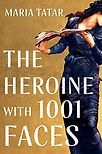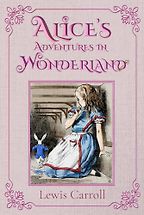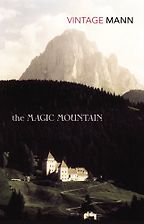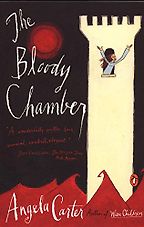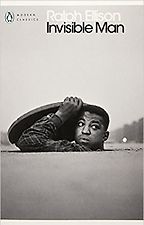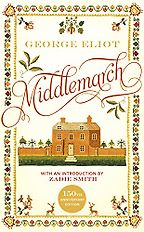Talismanic tomes are our topic today. Please explain this rubric.
Is there anyone at all out there eager to challenge the magic of storytelling? During one of the darkest nights of the pandemic (January, dusk, a friend ill with Covid), I picked up Nina George’s The Little Paris Bookshop. It’s a novel about a man with an instinct for matching everyone who walks into his store with just the right volume to read next. That little book was exactly what I needed that evening, and it drew me into an immersive reading experience, letting me in on the secret heartaches and not-so-secret triumphs of some brave new companions. Presto, late into the night, things no longer seemed so hopeless.
What makes Alice’s Adventures in Wonderland a talismanic tome?
I vividly remember how Miss White, my third-grade teacher, snatched up the copy of Alice’s Adventures in Wonderland on my desk. That was the volume I had chosen for “silent reading time.” I was a bookish child, and even Tenniel’s spidery illustrations did not put me off. In front of the entire class she declared, “If you read this book now, you will spoil it for when you are a grownup.” That was how Alice became the most important literary character in my life. “You’re nothing but a pack of cards,” became my favourite line.
I love Alice’s growing sense of wonder at the topsy-turvy universe she enters. Wonder, as Plato and Aristotle tell us, is the beginning of philosophy, and Alice’s Adventures in Wonderland is a deeply philosophical book. Alice is besieged by humans, some enraged, others just plain eccentric. Surrounded by falling objects, bewildered by beasts, and doing her best to stay afloat in a pool of tears, poor Alice is so disoriented that she’s in a state of permanent existential crisis. In the end, she stands up to all the outlandish creatures in Wonderland, and then skips off to have a cup of tea, leaving you wondering about Alice and her close encounters with nonsense, disorder, and lawlessness.
So talismanic books see you through tough times? In Enchanted Hunters you explore the power of sharing stories. For instance, how the contact zone produced by reading books together creates physical closeness while setting minds in flight. And how the stories we read early on affect the formation of identity. Is children’s literature particularly talismanic?
Children’s books can have a sparkling, incandescent quality, drawing us into a luminous contact zone. The writer Kate DiCamillo tells us, “We let down our guard when someone we love is reading us a story. We exist together in a little patch of warmth and light.” Child and adult, reading together, are in a safe space, a “once upon a time” that may be scary but that is also decisively not in the here and now. Alice’s Adventures in Wonderland gives us precisely that—a place of laughter and grief, where you can study “Mystery, ancient and modern” or take lessons with a “Drawling-master.”
The Magic Mountain is your next talisman.
We’re hurtling across the years now from third grade to graduate school, and from an underground Wonderland to the airy heights of a mountain top! Thomas Mann‘s The Magic Mountain introduces us to Eros and Thanatos, the twin forces of life and death, and they become the subject of profound meditations and conversation. There’s more than a whiff of spookiness to the work, a fascination with disease, suffering, and death. Mann described his novel as a Zeitroman, a novel that takes time as its subject matter but also captures an entire era.
The hermetic space of the sanitarium Berghof gives us a microcosm of the pre-World War I era. Mann presents philosophical debates between Lodovico Settembrini, apostle of the Enlightenment, and Leo Naphta, a Jesuit attracted to totalitarianism and Marxism, and to the dark side of life in general.
Mann aimed to create a Wagnerian Gesamtkunstwerk, a total work of art—richly operatic and sounding full chords. The Magic Mountain packs everything in – philosophy, history, psychoanalysis, science, and technology, along with the paranormal and the banal.
In a chapter called “Schnee” (“Snow”) Hans Castorp, the novel’s protagonist, has a near-death experience while learning to ski. Suddenly he understands the seductive power of death and yet finds the will to live when faced with nature’s cruel indifference to his fate. When I was in graduate school, I had something resembling that “Schnee” experience while skiing in Austria. I lost all sense of orientation and might have been buried in a snowstorm had I not managed to find my way back to the ski lift. Hans Castorp sustained me. After that, I somehow knew that I would find life in literature and literature would always be in my life.
So, Magic Mountain steers readers through periods of disorientation?
It’s a book about making a wrong turn but finding ways to grow and transform despite that. And it takes us into the mythical and magical (Castorp is somewhat like Tannhäuser, who dwells too long in the realm of Venus), a fact that reminded me of how foundational cultural stories (myths, legends, parables, and fairy tales) are perpetually morphing into new versions of themselves. Every writer is a bricoleur, a tinkerer who puts together bits and pieces of what is close at hand. That mix of the old and the new has a steadying force, one that I recognized only later in life.
What talisman should we talk about next?
Angela Carter’s The Bloody Chamber takes me to a turning point in my career, when I reinvented myself as a folklorist, moving from German Studies (though never really leaving it behind) to the study of myths and fairy tales. At that time, the Brothers Grimm were considered off-limits in academia. Studying their philological work was legitimate, but the Children’s Stories and Household Tales were considered unworthy of scholarly attention and analysis. That changed dramatically with the publication of Bruno Bettelheim’s The Uses of Enchantment. When I followed the advice in that book and started reading fairy tales to my children, I realized we were wrong to trivialize fairy tales. They were in fact complex forms of cultural production, taking us back to a time when adults told stories not just to entertain themselves while carrying out repetitive household chores, but also to pass on wisdom and start conversations about what they valued.
Then I discovered Anne Sexton, Margaret Atwood and Angela Carter, writers bent on demystifying fairy tales, looking under the hood, and showing how their stories did not pass on timeless, eternal truths but were culturally inflected, often with values we no longer share with our ancestors.
Fairy tales can stay alive only when we hit the refresh button, making them new and relevant. Like Toni Morrison in Tar Baby and Song of Solomon, Angela Carter turned to fairy tales and myths (all action) and recycled them, expanding the cast and the plot while also complicating the characters by giving them backstories and interiority. Suddenly we see inside the minds of Beauty, Red Riding Hood, and Bluebeard’s wife, observing how they react to the predators, villains, and beasts who cross their paths. Angela Carter was wonderfully iconoclastic and subversive, blowing up fairy tales in both senses of the term—destroying the older versions but also tapping into all their melodramatic excesses.
I loved Carter’s experimental writing in The Bloody Chamber and how she made us rethink the terms of familiar tales like “Sleeping Beauty.” In my courses on fairy tales, I assign the Brothers Grimm and Charles Perrault, and then we move on to Anne Sexton and Angela Carter. Suddenly the winds pick up, and you can feel the racing energy in the room. Sexton and Carter gave us permission to rethink the familiar, to make things up, to make a story our own. In some years, I’ve offered students the option to write their own versions of the tales. May I brag for a moment about one of my former students, a writer by the name of Soman Chainani, who just published a wonderful volume called Beasts and Beauty? Or about Tomi Adeyemi, author of Children of Blood and Bone?
From a talismanic tome that opened up old tales to a midcentury classic about a marginalized man, please tell me about Ralph Ellison’s Invisible Man.
When I was working on Annotated African American Folktales, with Henry Louis Gates, Jr., I spent a year as a Fellow at the Hutchins Center for African & African American Research. It was almost like signing up for a fast-tracked degree in African American studies. I reread Invisible Man and realized that Ralph Ellison, who saw himself as writing in the Anglo-American and European literary tradition, took much from African American folklore. And that’s when Invisible Man began to hiss and crackle for me, throwing sparks in many different directions.
Invisible Man begins underground. The protagonist is diverting electricity from the grid to a hidden, subterranean space, luminous with purloined energy. Ellison is using the technique of what Henry Louis Gates, Jr., calls, “the talking book,” communicating to us the protagonist’s experience of dislocation and alienation. Invisible Man is a work that is nearly seventy years old, but it resonates powerfully with us today, with all that has emerged in the wake of the Black Lives Matter movement.
Just a few days ago, I was part of an interview team for a post-doc program at Harvard. One of the applicants described how Invisible Man had led him to the study of literature. Ellison had done what Shakespeare had not been able to do for him. Here was a character with whom he could identify, a character who was “relatable,” as he put it, with a rich interior life that corresponded in symbolic terms to what he, as an African American man, had experienced.
Sometimes books act like mirrors for us (putting us into the funhouse, with all its zany distortions), but sometimes they can function as windows into other worlds or doors into someplace else. We use all those figures of speech to understand the reading experience. For me, reading Invisible Man meant crossing a threshold and witnessing something that was unfamiliar, strange, and, yes, we are back to “disorienting”. Things that had once been imperceptible and faint to me suddenly became legible, with a clarity and precision I could not have imagined on my own.
Middlemarch is your final talisman.
What is it about this “study” of provincial life, as George Eliot called it in her subtitle? What continues to draw readers to the story of Dorothea Brooke’s miserable marriage? Virginia Woolf described Middlemarch as one of the few English novels written for grownup people. It is such a richly layered text, with oddball characters desperately trying to live in meaningful ways.
Middlemarch takes up more than just romantic entanglements and failed marriages. It reminds us of the challenges facing women living in that era, especially if they wanted their lives to be of any consequence at all. Dorothea Brooke wants to apply her intellect and energy to something beyond life at Lowick Manor (has there ever been a more telling name for an estate?), but she can find no outlets for her passions. “I am always at Lowick,” she tells Will Ladislaw, who provides an instant translation: “That is a dreadful imprisonment.”
Five Books interviews are expensive to produce. If you're enjoying this interview, please support us by donating a small amount.
I’m not alone in my love for the last sentence of Middlemarch. Eliot tells us that “the growing good of the world is partly dependent on unhistoric acts.” Despite all the obstacles to “doing good,” some courageous souls still manage to be profoundly philanthropic in the best sense of the term, that is, caring for others and invested in the welfare of those around them.
The Heroine with 1,001 Faces is your most recent contribution to our understanding of the culture-building power of story. Were ancient archetypes talismans too?
There has been a seismic shift in our understanding of the hero/heroine archetype. A new generation of writers has turned our attention to the poetry of the ancient world and explored how we have created gospel truths, as it were, out of myths and epics that are mysterious, complex, and multilayered. Just as Angela Carter and other writers turned fairy tales upside down and twisted them inside out in the 1970s and onward, women writers today have taken up myths and epic poetry, tapping the Muse on the shoulder and channelling new versions of old stories, telling them now from the point of view of the women in them. I think here of Margaret Atwood’s Penelopiade, which must have been the moving force behind works like Pat Barker’s Silence of the Girls, Madeline Miller’s Circe, Ursula LeGuin’s Lavinia, and Natalie Haynes’s A Thousand Ships. Ancient tales were once treated with reverence, but now we recognize that they were just one version of a story, a single perspective that blocked us from seeing all the other ways of looking at war, sacrifice, enslavement, and carnage.
Joseph Campbell told us about the hero’s journey and its attendant ordeals in The Hero with a Thousand Faces. While reading Campbell, it dawned on me that all the virtues Campbell celebrated in his pantheon of heroic men were demonized in women. Look at Eve and Pandora and how their adventurous curiosity led to trouble in paradise. Pandora lifts the lid of a jar, and what does she do but release sin and evil into the world? Eve bites into forbidden fruit from the Tree of Knowledge, and she too brings sin and evil into the world, making us all subject to mortality. She becomes known as a seductive temptress in search of carnal knowledge more than anything else. There’s another way of looking at Pandora and Eve and, in my book, they are cultural heroines who embody curiosity and remind us of the value of hope and, yes, change in our fragile world.
Get the weekly Five Books newsletter
Because women were confined to domestic spaces, they were rarely able to undertake the hero’s journey. But that does not mean that they were without a mission, for they wove tapestries, spun yarns, and plotted stories to get the truth out and to broadcast injury and harm. They were determined not just to survive but to mend, repair, and heal.
Scheherazade is exemplary in this regard. She volunteers to marry Shahryar, a ruler who was betrayed by his wife and who, ever since has been wedding a succession of women, each beheaded the morning after. To save her neck, Scheherazade tells cliffhangers, stories that keep her alive each night. After some years, she triumphs, not just surviving but also convincing her husband to abandon his violent ways and live in domestic contentment.
You can’t get a more concrete example of the culture-producing power of stories or how tales can become talismans. Thank you for ending on such a perfect note.
Interview by Eve Gerber
November 21, 2021. Updated: June 23, 2022
Five Books aims to keep its book recommendations and interviews up to date. If you are the interviewee and would like to update your choice of books (or even just what you say about them) please email us at [email protected]

